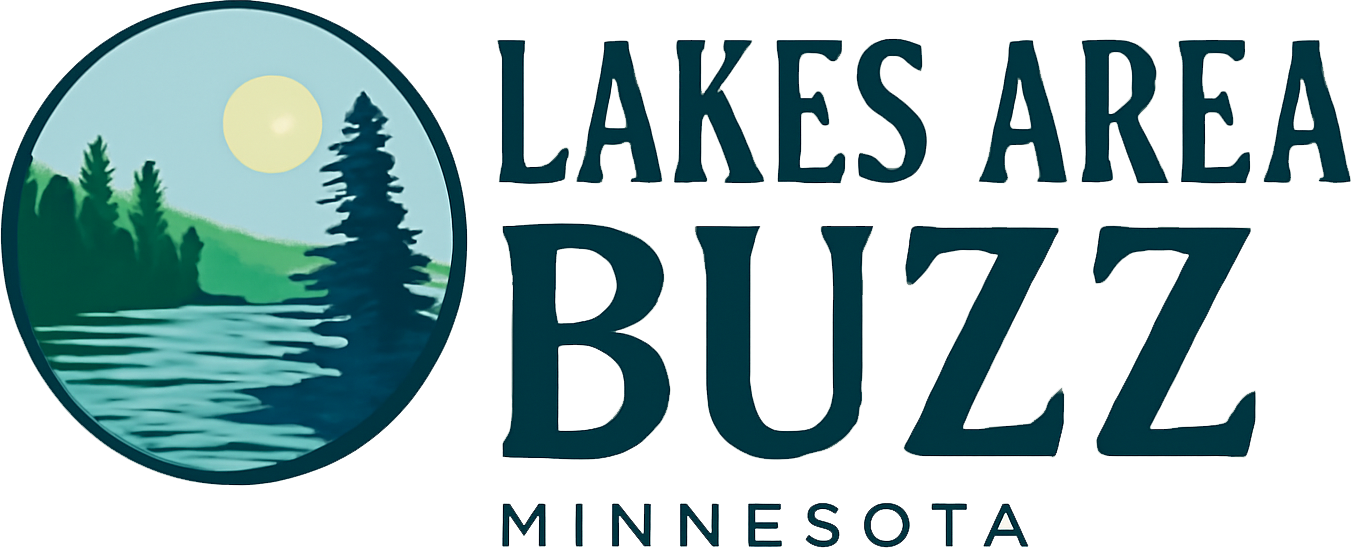MnDOT Advances Buttonhook Design for Hwy 371/210 Interchange in Baxter
Lakes Area Buzz
Archives
MnDOT Advances Buttonhook Design for Hwy 371/210 Interchange in Baxter
SIGN UP FOR OUR NEWSLETTER
Understanding the Highway 371/210 Interchange Project in Baxter |
Community Voices Concerns Over Business Access and Aesthetic Impact |
As a resident of the Brainerd Lakes area, I’ve been following the Minnesota Department of Transportation’s (MnDOT) Highway 371 and Highway 210 interchange project closely. It’s one of the largest transportation efforts in our region’s history, and it has sparked passionate debate about what’s best for Baxter’s future. |
Headline |
MnDOT plans to rebuild the busy intersection where Highway 371 meets Highway 210 and the nearby railroad tracks. The total cost is about $58 million, paid for through the state’s Corridors of Commerce program. The main goal is to reduce accidents and traffic backups at what’s considered one of Minnesota’s most dangerous intersections.
The new plan, called the “buttonhook” design, would lift Highway 371 up and over Highway 210 and the railroad. Drivers would use several large roundabouts on either side to enter or exit the highway. According to MnDOT, this would make travel safer and faster by separating local and through traffic.
Planning and design work will continue through 2027. If approved, the project would break ground in 2028 and take about two years to complete. During construction, lanes would close and detours would likely cause delays. Those details won’t be finalized until later. |
Why the Design Is Unique |
The buttonhook design is a first for Minnesota. It combines an elevated roadway with multiple roundabouts instead of traffic lights. Engineers say it removes dangerous crossing points and gives drivers simpler, safer paths through the area.
MnDOT chose this layout after studying five other designs, like the diverging diamond and single-point urban interchange. The department says it considered how each option would affect safety, traffic flow, nearby land use, and cost. The buttonhook, they say, performed best overall.
However, the design’s uniqueness is also what worries many in our community. With no other examples in Minnesota, residents wonder whether it will work as promised and what it means for nearby businesses. |
What MnDOT Hopes to Achieve |
MnDOT says the project serves three main goals:
|
The Debate in the Community |
The idea of rebuilding the intersection has support, but the specific buttonhook design has become a dividing line between MnDOT officials and many Baxter residents and business owners. |
Business Concerns |
The Brainerd Lakes Chamber of Commerce has come out strongly against the current plan after surveying local business owners. Many fear that lifting the highway above ground and adding roundabouts could make businesses harder to find and reach. About 60 percent of the Chamber’s surveyed members rated the design as poor.
Business owners also worry about the two years of construction. They say reduced traffic and limited access could drive away customers. Some describe the new road layout as confusing and fear it will push visitors to skip Baxter altogether.
The Chamber has launched a public information campaign, encouraging residents to contact the Baxter City Council before it votes on whether to approve the plan. That vote must happen before February 1, 2026. |
Resident Reactions |
At a public hearing held November 3 at Forestview Middle School, hundreds of residents attended to voice their opinions. Most comments were critical of the design, saying it would harm the small-town feel of Baxter and hurt local commerce. Many said they support improving safety but want MnDOT to reconsider the interchange layout. |
Expert Opinions |
Local transportation expert Chuck Marohn, founder of Strong Towns, has criticized the buttonhook design as overly complex and expensive. He argues that simpler solutions—like a single-point urban interchange and fewer access points—would reduce crashes at a lower cost. He also points out that the $58 million price tag exceeds the combined property value of the affected area.
MnDOT engineers, on the other hand, say the plan reflects years of technical study and feedback. They believe the roundabouts will cut crash risks dramatically and that the elevated highway will keep traffic flowing smoothly while protecting drivers from train delays. |
What Happens Next |
The Baxter City Council now faces a tough decision. It can approve the project, reject it, or grant approval with requested changes. If the city takes no action within 90 days of its public hearing, the plan is automatically approved by state law.
As the council considers its vote, the debate goes beyond just traffic design—it’s about how the community envisions its future. Supporters say the project will make Baxter safer and more efficient. Opponents worry it will reshape the town in ways that hurt its identity and economy. |
Why This Decision Matters |
Whatever the outcome, this interchange will shape Baxter for decades. If MnDOT’s plan goes forward, construction will change how people travel, shop, and experience the area. If it’s rejected, the state may have to restart the design process or move the funding elsewhere.
For now, the community’s voice matters most. Whether you support the project or not, understanding the facts and sharing your perspective helps shape the decision that will define the next chapter of Baxter’s growth and safety.
If you have thoughts or questions about the Highway 371/210 interchange project, I’d love to hear from you. Do you support the buttonhook design, or are there other ideas you think should be considered? Was any part of this article confusing, or is there more information you’d like to know? Please share your opinions, feedback, or requests for clarification by sending a comment to joshua@lakesareanewsletter.com. Your perspective matters as our community moves forward together.
|

